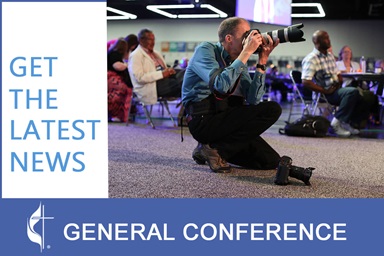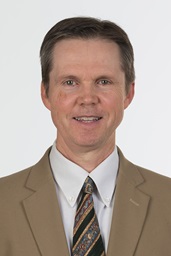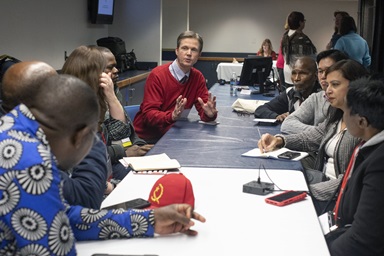According to the Pew Research Center, the U.S. Hispanic population reached a new high of 55.4 million in 2014 (or 17.4 percent of the total U.S. population). However, mainline denominations such as The United Methodist Church do not reflect the ethnic composition found in the growing racial and cultural diversity of U.S. society.
To address the situation, the United Methodist National Plan for Hispanic/Latino Ministry convened its third national consultation in March 2015. Participants developed proposals and strategies to deepen the denomination’s work with new generations and train them as future church leaders.
Manuel Padilla, a young layman born in Monterrey, Mexico, is developing joint strategies among the National Plan and conferences to strengthen United Methodist ministry in the Hispanic/Latino community. Padilla spoke with to the Rev. Gustavo Vasquez about the National Plan.
I understand you became involved with the National Plan in 2010 while you were in seminary. How did that happen?
In Cincinnati, I participated in a National Plan training called Module 1. I learned what The United Methodist Church was doing with Hispanic ministries. It filled me with satisfaction to know that the church was not alien to ministry in our community.
I expected all the answers from the National Plan. As I participated in the Module 1 training along with 40 other people, I was a little disappointed for several reasons. First was the lack of following the instructions that were provided; second, the lack of commitment of those involved. There was an absence of young people. The methodology used was inappropriate, in my opinion, and it lacked the focus and concentration of efforts on issues that we could address in a more profitable way.
Six months later, I attended the Module 2 training and realized the complexity of the work. I began to process the content in an intentional way, not in an effort to find answers to all the questions that come up when you start working with people in the United States.
It was a long process with demands — a manual of more than 300 pages, educational charts, exercises and resources — but I could see a value in its content, even though it was not yet finished. Later, I attended a strategic-planning session for my conference, and there again, I faced the complexity of this work.
I felt the need to get closer to this work, looking for answers and thinking there were better ways of doing things. That led me to enter into a conversation with leaders from the National Plan, such as the Rev. Francisco Cañas, Saul Trinidad and others, who invited me to be a facilitator of modules 1 and 2. I started getting involved with the National Plan’s work, until I was called to serve in the area of strategic planning as I finished my seminary studies.
You saw your participation in the National Plan as a call from God. After receiving the proposal, you spent two months discerning what it would mean for your life and your recent marriage to Susana Armendariz. Tell me about that.
When I started working in the National Plan office in 2013, they fully understood that my work was not envisioning and giving orders but, instead, creating the spaces in which we can hear each other and create strategies using what already existed as a foundation. Studying the previous 20 years of the National Plan has taught us through their experiences, so now we look at things less programmatically and with a more dialectical perspective.
I dedicated myself to promoting dialogue and conversation regarding topics brought up as innuendo that we need to discuss as a community. It was necessary to listen before we could answer questions like, “Why do we do ministry among Hispanics?” We have been doing this for the last two years in different conferences. Through these discussions, we heard the voice of God through his people. With this dialogue methodology, we have been building conference strategies.
What are these strategies defined by the National Plan?
The strategy is to create spaces for dialogue. The finest example was the third consultation. We allowed ourselves to hear the voice of God through youth, bishops and general agency staff and, together, to discern what God is calling us to do in these times.
What were the results of the consultation?
The first result was listening to each other and realizing that what we have been doing is not going to keep working. These days, the subject of evolving and reinventing one’s self has to be seen from another perspective to avoid falling into the cliché that, “The only constant thing is change.” So we change some things, operate under these new parameters for two or three years, then go back to doing things old school and away from current reality for another 10 years and in about 15 years, reinvent ourselves.
The consultation showed us how we could have these conversations more frequently – once a year or every two years. In other words, how could we be in constant dialogue that allows us to create priorities and actions?
You said that in discussions in conferences and local churches, one problem that surfaced is the learned behavior and habit that the structure of the church tells Hispanic/Latino communities what and how to do things. The third consultation modeled methods that any conference or jurisdiction could duplicate. Why was this so important?
The new generations were born, raised and educated in the American culture. They have a much more proactive and interactive attitude with established social structures, including the church. As a result, they do not wait for an agency to create a program or event, and they do not wait for the National Plan to pay travel expenses to come together to do something.
When we hear the voice of the younger generation, we realize that sometimes we take responsibilities that do not belong to us. We believe that we have to make things happen, when in reality, we are here to support whatever is happening. This has a lot to do with the Wesleyan doctrinal principle of prevenient grace. We have to understand that God is already working and our responsibility is to join our efforts, not tell God to work.
How do you see the National Plan dealing with the dynamics of working with youth?
The consultation, rather than an innovative or preventive event, was a desperate response and a corrective event. I think our United Methodist Church is realizing that we need to listen to the voices of the youth. Caring for young people who are not in the pews is not an option; it is a necessity. Our task is not to serve youth, but to learn from them. The challenge is not to bring them to the pews; it is to bring them to the pulpit.
To any pulpit or to the ethnic minority pulpit?
To keep thinking about churches separated by racial groups makes no sense at a time when globalization is no longer a concept but the dynamic and reality of our everyday life. When we look at the demographics, or we simply look out the window, we realize that Hispanics do not necessarily speak Spanish, so why put them to preach in churches where they only speak Spanish?
What is the expectation of the National Plan over the next 10 years?
More than an expectation, the dream of the National Plan is to continue walking with the people. Sometimes we have the stereotype that only poor people, immigrants and those lacking bread make up the body. I think it is a sin because the body should include all people. The National Plan wants to walk with the community, no matter what language they speak (Spanish or English). We focus on continuing to create spaces to develop all those who make up the community who have received a call from the Lord.
The National Plan intends to continue creating spaces for youth, adults and older adults to develop and understand the needs of each segment because we can no longer encapsulate ourselves in a segment or a stereotype. We cannot say and assume that all Hispanics are young, or that all Hispanics speak English. However, we are creating the space to understand who the Hispanics are today and how this concept will transcend into the future, so one has to be more inclusive and sensitive to diversity.
We continue to work in opening space for discussions regarding the role of Hispanic ministry in The United Methodist Church. We are building, through encounters and continuous dialogue with the people, the avenues through which the potential of our people flows and will continue to flow. We want Hispanics to be more involved and committed to bring new life to our beloved United Methodist Church.
Will other consultations follow?
Delia Ramirez, a young leader in The United Methodist Church and a participant in the third consultation, said prophetically, “If we are asking other questions, it's because we have not understood what the objective of the third consultation was.” The aim was not to create an annual or quadrennial event. The objective was to start an honest dialogue, which produced findings and recommendations for different levels of our church. We do not need all four programmatic agencies to come together to create this dialogue.
Could we call these dialogues “consultations?"
Sure, but not in the traditional sense of an event that brings together different types of people. This event was unique ─ the sense of sharing in dialogue, visions, dreams, plans, observations, experiences and information that helps develop actions and future steps for a community like ours.
How did you feel about participating in the third consultation?
To be part of the team that organized the consultation was a privilege. The work of a long list of about 200 people made possible the event. The consultation’s success lies in conversations, dialogues and connections that occurred before, during and after the event because that was the objective and the basis for the National Plan’s present and future work.
The Rev. Gustavo Vasquez directs Hispanic/Latino Communications for United Methodist Communications. Contact him at 615-742-5111 or by email: [email protected].
Like what you're reading? Support the ministry of UM News! Your support ensures the latest denominational news, dynamic stories and informative articles will continue to connect our global community. Make a tax-deductible donation at ResourceUMC.org/GiveUMCom.




